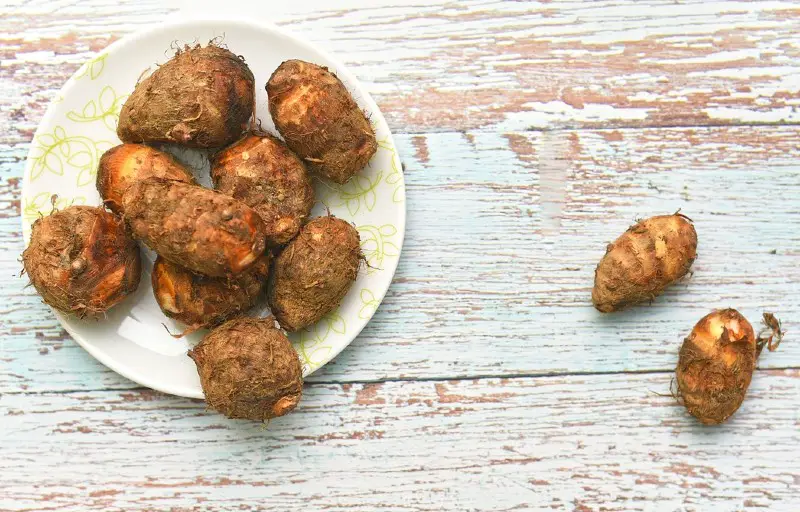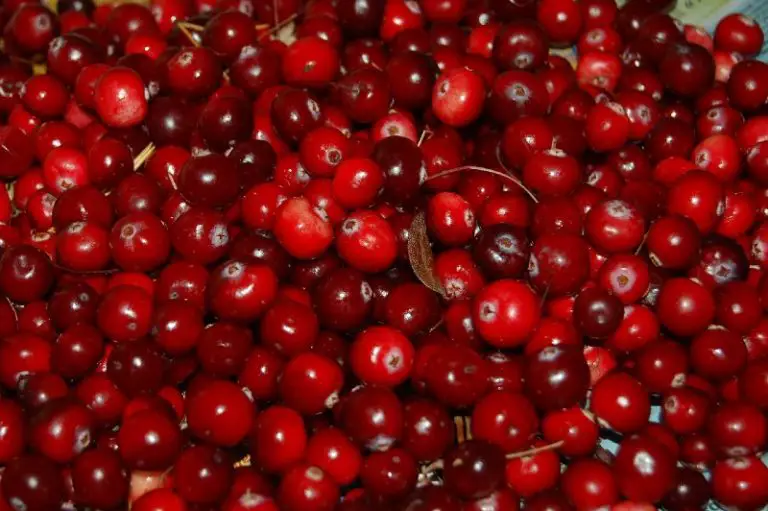What Does Taro Taste Like?
Quick Answer
Taro is a starchy root vegetable with a nutty, earthy flavor that is slightly sweet. Its texture when cooked is often creamy, similar to that of a cooked potato. The taste can be likened to a milder version of sweet potato. It’s important to cook taro thoroughly, as the raw form contains irritants that can be harmful when ingested.
What is Taro?
Taro is a root vegetable native to Southeast Asia and India but widely cultivated and used in many places around the world, including Africa, the Caribbean, and the Pacific Islands.
It has a brown, fibrous exterior and a starchy, white or purplish interior.
Taro is commonly used in both sweet and savory dishes, and it must be cooked before consumption to neutralize harmful irritants.
Its leaves, known as “taro leaves,” are also edible when cooked and are often used in dishes like soups and stews.
What Does Taro Taste Like?
Taro has a unique flavor profile that combines nutty, earthy, and slightly sweet notes. The flavor is often described as more subtle compared to other root vegetables, and it has a certain complexity that makes it versatile in both sweet and savory dishes.
Comparison to Other Root Vegetables
- Sweet Potatoes: Taro is often compared to sweet potatoes because both have a slightly sweet flavor. However, taro has a nuttier, earthier quality.
- Yams: While both taro and yams are starchy, yams are generally sweeter and more fibrous. Taro offers a creamier texture and a more subdued flavor.
- Potatoes: Traditional potatoes have a more neutral, starchy flavor. Taro, on the other hand, has a more distinctive taste and provides a creamier texture when cooked.
What is The Texture of Taro Like?
When cooked, taro offers a creamy, almost velvety texture, making it an excellent addition to stews, soups, and mashes.
Its texture is similar to that of a well-cooked potato but tends to be denser, which adds a comforting, hearty element to dishes.
FAQs
Is The Texture Of Taro Similar To Potatoes?
Yes, taro has a creamy, almost velvety texture when cooked, similar to that of a well-cooked potato. However, taro tends to be denser.
Does Taro Taste Like Sweet Potato?
Taro and sweet potatoes share a slight sweetness, but taro is generally nuttier and earthier in flavor.
Can You Eat Taro Raw?
No, taro should not be consumed raw as it contains calcium oxalate, which can be irritating to the mouth and digestive system. It needs to be cooked before consumption.
How Does Cooking Affect The Taste Of Taro?
Cooking methods like boiling, steaming, and baking generally bring out taro’s natural sweetness and creaminess. Frying can make it more crispy but still maintain its core flavor.
Is Taro Good For Desserts?
Yes, the slightly sweet and nutty flavor of taro makes it a popular choice for desserts like ice cream, bubble tea, and cakes.
Can I Substitute Taro For Potatoes In Recipes?
While you can substitute taro for potatoes, the unique taste of taro will alter the flavor profile of the dish. Taro also has a creamier, denser texture.
Is Taro Naturally Gluten-Free?
Yes, taro is a gluten-free root vegetable, making it suitable for those with gluten sensitivities or celiac disease.
Does Taro Have A Strong Flavor?
Taro has a relatively mild but distinct flavor. Its nutty, earthy, and slightly sweet taste makes it versatile but not overpowering.
What Are Some Popular Dishes That Use Taro?
Taro is used in a variety of dishes like poi in Hawaiian cuisine, taro chips, stews in African and Asian cuisines, and desserts like taro ice cream.
What Does Taro Milk Tea (Taro Boba Tea) Taste Like?
Taro milk tea, also known as taro boba tea, combines the earthy, nutty, and slightly sweet flavor of taro with the creaminess of milk and the chewy texture of boba pearls. The resulting beverage is a complex mix of flavors and textures that is both sweet and earthy, making it an intriguing alternative to traditional milk teas.
What Does Taro Ice Cream Taste Like?
Taro ice cream captures the essence of taro’s nutty, earthy flavors, complemented by a subtle sweetness. The creaminess of the ice cream enhances the natural texture of taro, resulting in a dessert that is rich, velvety, and exotically flavored.
Does Taro Taste Sweet?
Taro has a slightly sweet taste, although it’s not overwhelmingly so. Its sweetness is balanced by earthy, nutty flavors, which give it a well-rounded flavor profile.
Does Taro Taste Like Vanilla?
Taro does not naturally taste like vanilla, but it has a subtle sweetness and creaminess that might be complemented by vanilla flavors in mixed dishes or beverages like milkshakes or smoothies.
What Does Taro Powder Taste Like?
Taro powder is often used to flavor drinks and desserts, and it offers a concentrated version of taro’s nutty, earthy, and slightly sweet taste. However, the flavor can vary based on the quality and processing of the powder.
Does Taro Taste Like Yam?
While both taro and yams are starchy root vegetables, they are distinct in flavor. Yams are generally sweeter and more fibrous, while taro has a nuttier, earthier flavor with a creamier texture.
Does Taro Taste Like Arrowroot?
Taro and arrowroot are different plants and have different flavors. Arrowroot has a more neutral taste and is often used as a thickening agent. Taro, on the other hand, has a distinct nutty, earthy, and slightly sweet flavor.
Is Taro Similar To Ube?
Taro and ube are both starchy tubers, but they are different plants. Ube is sweeter and has a vivid purple color, while taro is more nutty and earthy and can range from white to purple in color.
Does Taro Boba Taste Like Potato?
Taro boba doesn’t taste like a traditional potato. While both are starchy, taro has a more complex flavor that is nutty, earthy, and slightly sweet, which is quite different from the more neutral flavor of potatoes.
Does Taro Boba Contain Caffeine?
Traditional taro boba tea is usually caffeine-free as it is made from taro powder or taro root, which does not contain caffeine. However, some variations might mix taro with black or green tea, which would contain caffeine.
Can Lactose Intolerant People Have Taro Boba Tea?
Taro boba tea usually contains milk or a milk-based creamer, which would not be suitable for those who are lactose intolerant. However, many cafes offer lactose-free or plant-based milk alternatives, allowing lactose-intolerant individuals to enjoy taro boba tea. Always check the ingredients before consuming.


